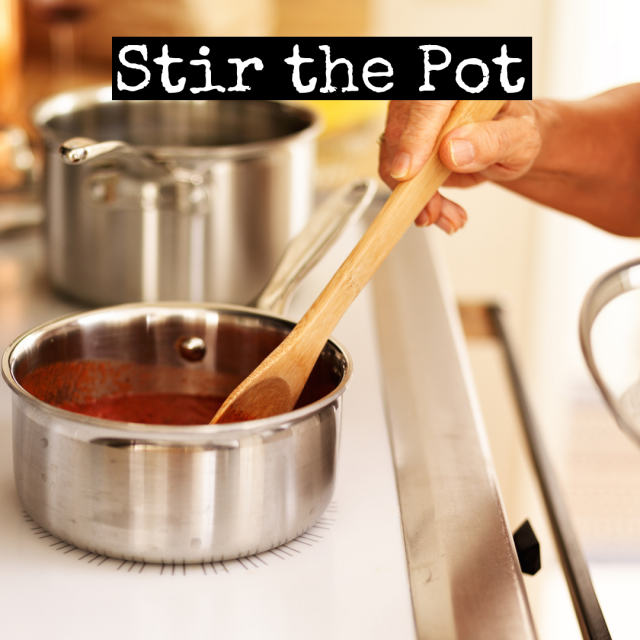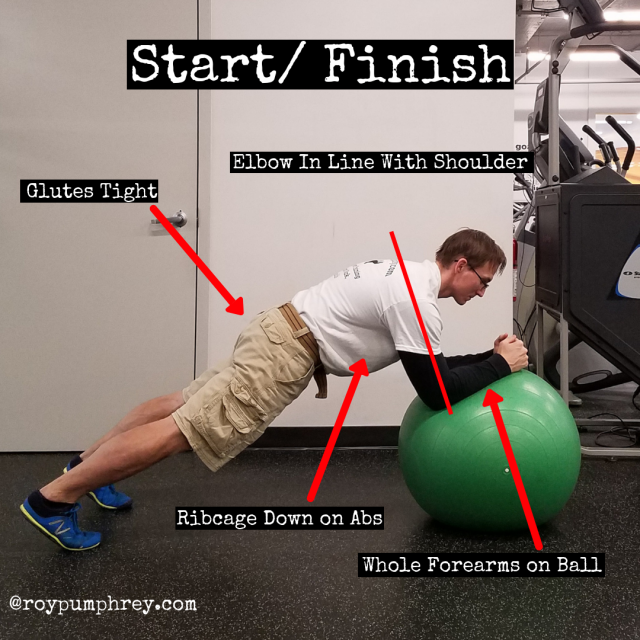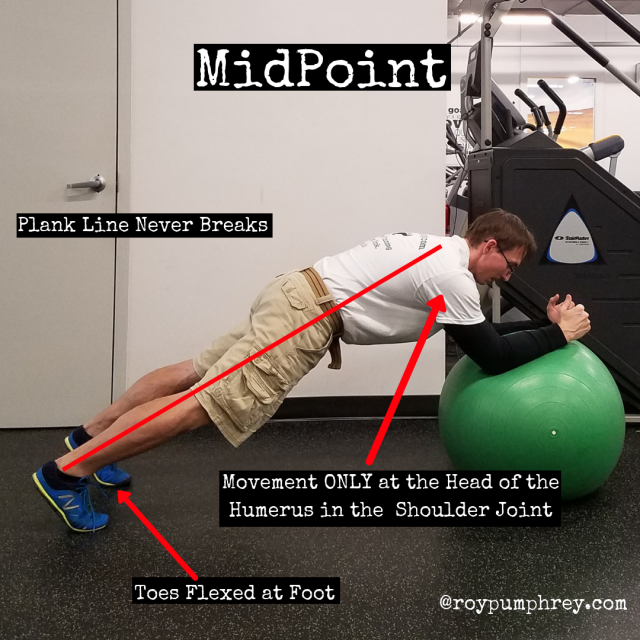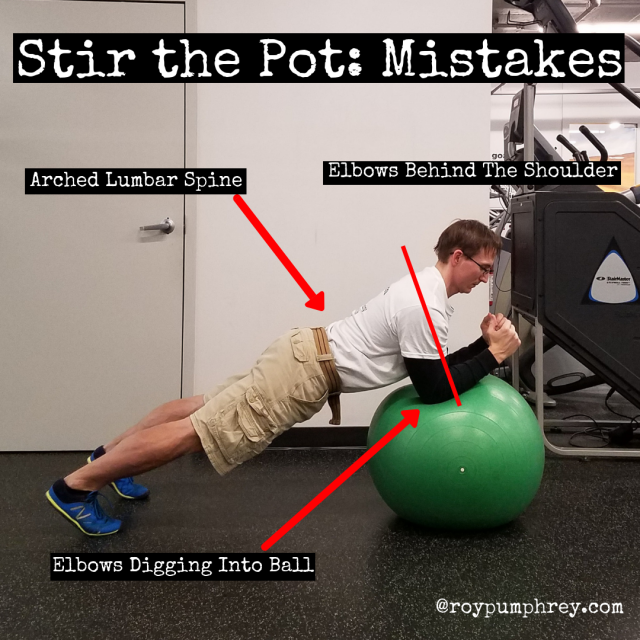
How do I Preface This?
It’s tough, because, Stir The Pot is most definitely in the running and may, in fact be, the greatest core exercise known to mankind.
The problem(s) are two-fold:
- It’s too advanced for most people (lots of digging elbows, overarched backs, drooping hips).
- The focus is too often on speed of movement (just get through the reps).
The focus should be on:
- Creating TENSION, holding the plank position, the whole time.
- Being SMOOTH and controlled, never rushing or relaxing.
What Makes Stir The Pot So Special?
It works ALL aspects and functions of the core, anti- extension, flexion, rotation, with one movement.
“True spine stability is achieved with “balanced” stiffening from the entire musculature, including the rectus abdominis and the abdominal wall; quadratus lumborum; latissimus dorsi; and the back extensors of longissimus, iliocostalis, and multifidus.”-Dr. Stu McGill
The stir the pot is essentially a MOVING PLANK, where the shoulders move but the BASE OF SUPPORT remains constant.
Being able to maintain this “Super Stiffness” through the entire core is paramount in building a bulletproof back.
A lumbar spine that creates movement is primarily used/ loaded for activity is an injury prone spine,
“those who have more motion in their backs have a greater risk of having future back troubles….people with troubled backs use their backs more. Generally, they walk, sit, stand and lift using mechanics that increase back loads. Many of them have stronger backs but are less endurable than matched asymptomatic controls (McGill et al, 2003). They tend to have more motion in their backs and less motion and load in their hips. – Designing Back Exercise: from Rehabilitation to Enhancing Performance
Stir the Pot Enhances Spinal Super Stiffness While Sparing The Spine:
“the sit-up recruits torso and hip muscles that impose compressive load on the spine for the average male of about 3400N. Performing sit-ups uses some training capacity – compression plus repeated bending – to achieve training of the torso and hip flexors. But remember that this combination of load and motion is a potent cause of annulus collagen delamination.
If I could give you a better tool to train the flexion muscles that preserves training capacity by sparing the most vulnerable tissues, you could then increase your tolerable training volume. This would be a great advance, of course. Consider the stir the pot exercise.
So even though sit-ups train the abdominals, psoas, and rectus femoris, the stir the pot exercise places the spine in a more resilient posture so you can really train these muscles hard.” – Stu McGill Via Chad Waterbury via T-Nation
But, only if done correctly.
Stir The Pot


Checklist:
- TIGHT (AF) Plank position <—–AF = As Fu#k. So tight, it’s uncomfortable.
- Forearms on the ball
- Have some “base” at the feet
- Toes in the ground, NOT balls of the feet on the ground <—-again, cheating, fake stability and you shouldn’t do these.
- Smooth, metronome like reps
- NEVER RELAX
- Elbows never come “under” the body, essentially a 90/ 90 at the shoulder and elbows is the start and finish position.
One Rule to Rule Them All:
THERE SHOULD NEVER BE ANY MOTION THROUGH THE
HIPS, SPINE, SHOULDERS. EVER.
Bro Tips:
- This is an advanced exercise, don’t do it unless you’ve earned the right. If you have to ask, “have I earned the right? Is Stir the Pot right for me, nope, probably not”.
- If you cannot maintain a neutral lumbar spine, maintain the desired pelvic position (either dead neutral, slightly anterior or posterior) and glutes on NO MATTER WHAT, in every single “Core” exercise you’ve done before this, you shouldn’t do this.
- DIGGING your elbows into the ball instead of the whole forearm is CHEATING. Wrists should more or less be touching the ball <–if you have giant forearms your wrists will be off the ball.
- Most people have their hips too high. Drop them some to maintain the plank and not “break” at the hips.
- Narrowing your stance can increase the difficulty exponentially. Keep in mind, if you narrow your stance and things start moving, it’s not better, its’ worse. Harder isn’t better, better is better. Widen the stance back out and get it right.



